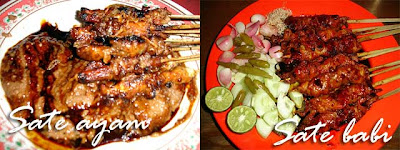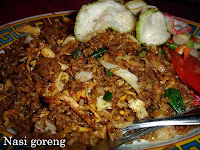 Today I went island-hopping in Honda Bay, which consists of several islets that have become popular swimming, snorkeling and diving destinations among visitors. Visiting the different beaches was a great way to celebrate my 28th. Located in Sta. Lourdes, Puerto Princesa City about 12 kilometers east of the town proper. In the wharf, pump boats could be hired to the different islands. Some islands require entrance fees. And there are others which are privately owned. So you have to ask for permission to visit. The package tour (PHP1000) is inclusive of hotel pick-up, pump boat to the different islands, entrance fees and donations, and lunch.
Today I went island-hopping in Honda Bay, which consists of several islets that have become popular swimming, snorkeling and diving destinations among visitors. Visiting the different beaches was a great way to celebrate my 28th. Located in Sta. Lourdes, Puerto Princesa City about 12 kilometers east of the town proper. In the wharf, pump boats could be hired to the different islands. Some islands require entrance fees. And there are others which are privately owned. So you have to ask for permission to visit. The package tour (PHP1000) is inclusive of hotel pick-up, pump boat to the different islands, entrance fees and donations, and lunch. Our first stop was Pandan Island. There are several huts and cottages on the island which visitors could use. You could also ask caretakers to get some coconuts to quench your thirst. Snorkeling was great around Pandan Island. And it was fun feeding the fish since they all swam towards you as you hold a piece of bread.
Our first stop was Pandan Island. There are several huts and cottages on the island which visitors could use. You could also ask caretakers to get some coconuts to quench your thirst. Snorkeling was great around Pandan Island. And it was fun feeding the fish since they all swam towards you as you hold a piece of bread. After an hour or two, we moved to Snake Island which was a two-kilometer sandbar shaped like a snake. It would have been fun to walk up to the end of the sandbar, but half way there, we started to get hungry. And high tide was setting in with parts of the sandbar starting to get submerged under water. So we decided to walk back to the huts where our tour operators served lunch.
After an hour or two, we moved to Snake Island which was a two-kilometer sandbar shaped like a snake. It would have been fun to walk up to the end of the sandbar, but half way there, we started to get hungry. And high tide was setting in with parts of the sandbar starting to get submerged under water. So we decided to walk back to the huts where our tour operators served lunch.
 Our last stop was Starfish Island. We got there just in time since it started to rain really hard and the winds started bring in strong waves. Starfish is known for its fine white sand and clear water that teems with starfish. The island had a sandbar encircling a lagoon which was a good thing since we were able to enjoy the warm water sans the strong waves.
Our last stop was Starfish Island. We got there just in time since it started to rain really hard and the winds started bring in strong waves. Starfish is known for its fine white sand and clear water that teems with starfish. The island had a sandbar encircling a lagoon which was a good thing since we were able to enjoy the warm water sans the strong waves.Other islets in Honda include Cannon (Cowrie) Island, Bat Island, Lu-Ii Island (from "lulubog-lilitaw"), Meara Marina, and Senorita Island (the breeding site of lapu-lapu fish).
 For dinner, we ate at Rene's Saigon Restaurant for some great Vietnamese food. It was a distance from the city center, past the airport in fact. But people frequented it despite its distance. When you take a tricycle, tell them you want to go to the chawlungan since they are not familiar with the restaurant name. I had my favorite bánh mì sandwiches and braised beef noodle soup. Thanks again to Rolly and Gigi for treating us out to dinner.
For dinner, we ate at Rene's Saigon Restaurant for some great Vietnamese food. It was a distance from the city center, past the airport in fact. But people frequented it despite its distance. When you take a tricycle, tell them you want to go to the chawlungan since they are not familiar with the restaurant name. I had my favorite bánh mì sandwiches and braised beef noodle soup. Thanks again to Rolly and Gigi for treating us out to dinner. After dinner, we trooped to Legend Hotel where Rolly and Gigi were staying. We stayed at the lobby to chat and have some snacks when Mayor Hagedorn passed by. Anyway, we have another trip tomorrow and have to get up early. More photos in Multiply.
After dinner, we trooped to Legend Hotel where Rolly and Gigi were staying. We stayed at the lobby to chat and have some snacks when Mayor Hagedorn passed by. Anyway, we have another trip tomorrow and have to get up early. More photos in Multiply.Technorati Tags: puerto princesa, palawan, philippines, beach, travel, travel blog, food, honda bay, island





























